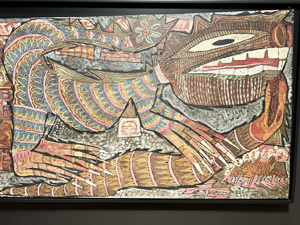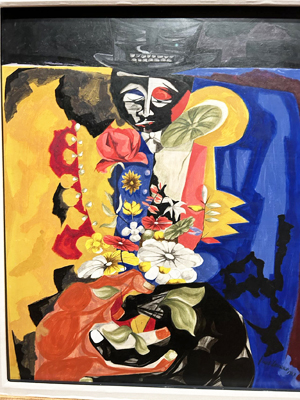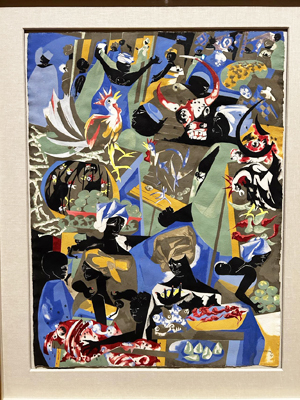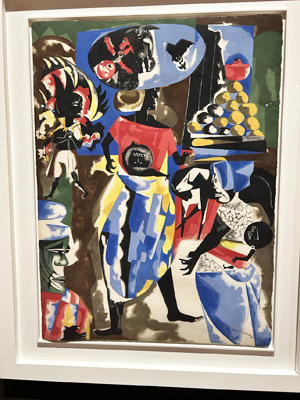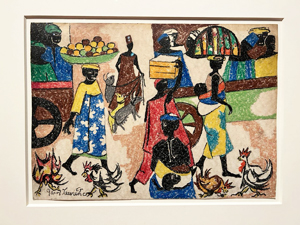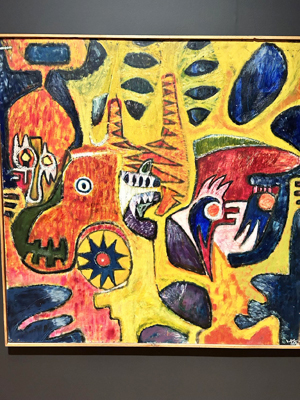
The Truth Staff
The Toledo Museum of Art has unveiled a new exhibition, “Black Orpheus: Jacob Lawrence and the Mbari Club,” on view from June 3 to September 3. The exhibition offers works by Jacob Lawrence that are together for the first time in decades and presents new information about his extended time in Nigeria in the 1960s.
The exhibition of more than 110 objects also presents paintings, sculptures, reliefs and works on paper by Mbari Artists and Writers Club members of the time, including Twins Seven-Seven, Muraina Oyelami, Asiru Olatunde and Jacob Afolabi.
“It’s a real privilege to be able to share these works,” said Adam Levine, TMA’s Edward Drummond and Florence Scott Libbey director, during the press viewing on Friday, June 2. “[Lawrence] is an incredibly important artist,” noted Levine. This exhibit, he added, will enable viewers to grasp an understanding of an important part of hie life as well numerous African artists “overlooked for too long.”
Lawrence was an American painter known for his work with African-American historical subjects and contemporary life. He brought the African-American experience to life using blacks and browns juxtaposed with vivid colors. He first gained national attention in his twenties with his 60-panel The Migration Series depicting the Great Migration of African Americans from the rural South to the urban North.
His art is in the permanent collections of various museums including the Philadelphia Museum of Art, the Whitney Museum, Metropolitan Museum of Art, the Brooklyn Museum, Reynolda House Museum of American Art and the Museum of Northwest Art. His 1947 paining, The Builders, hangs in the White House.
The “Black Orpheus” exhibition was co-curated by Kimberli Gant, PhD, curator of modern and contemporary art at the Brooklyn Museum and Erin Corrales-Diaz, PhD, TMA’s curator of American art.
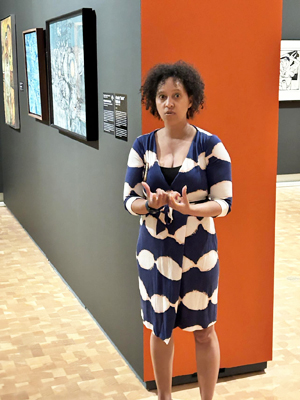
Lawrence visited Nigeria, then a newly independent nation, twice, in 1962, for a short stay of 10 days, and again in 1964, with his wife Gwendolyn Knight Lawrence, for an eight-month sabbatical. During that visit he painted and gave lectures and conducted workshops with the Mbari Club and also with Mbari Mbayo, the Osogbo-based group.
The “Black Orpheus” exhibition is organized into five sections offering insight into Lawrence’s experiences and highlighting the global diversity of the Black Orpheus and Mbari Artists and Writers Club
Nigeria is the first section in which Lawrence’s vision of the country is portrayed through depictions of markets, complex communities and spiritual practices.
Artists of Osogbo is the second section and presents works of various little-known Nigerian artists from the time of Lawrence’s visit who learned painting, printmaking, textiles from older generations of Western and non-Western artists.
Zaria Art Society focuses on a small group of then-younger Nigerian artists who met at the National College of Art & Technology. “They were frustrated with traditional Western training,” said Gant. So, they developed a philosophy called “natural synthesis”, incorporating local aesthetics and cultural traditions with western-style art techniques. “Sadly, so many are getting older and only now are getting the attention they deserve,” said Gant.
Across the African Continent features artists from outside of Nigeria who also trained in Western art styles and featured stories from their own cultures in new ways. Beyond the African Continent features artists from around the world whose creations mirrored that of their counterparts in Africa.
“Black Orpheus” was originally organized by the Chrysler Museum of Art and the New Orleans Museum of Art. The exhibition will remain at the Toledo Museum of Art until September 3.


